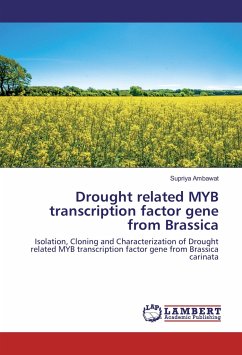Under natural conditions, the plants are, usually, surrounded by a series of potential enemies. They had created strategies of defense against pathogens and herbivores' attacks, allowing its perpetuation throughout evolution. These defense mechanisms are closely associated with the synthesis of secondary metabolites, which are also worldwide used in several areas of industry. This book address in a systematic manner how plants synthesize these substances in response to biotic or abiotic stimuli. Through this book we revealed that synthesis of plant secondary metabolites is dependent on changes in several metabolic pathways, being often directly associated with the primary metabolism. Nowadays, genomic tools have been useful alternatives that are leading to a new revolution of plant breeding, allowing the overexpression or inhibition of these substances. Some limitations and challenges to be achieved upon the dynamics of secondary metabolite synthesis in plants are presented.
Bitte wählen Sie Ihr Anliegen aus.
Rechnungen
Retourenschein anfordern
Bestellstatus
Storno








